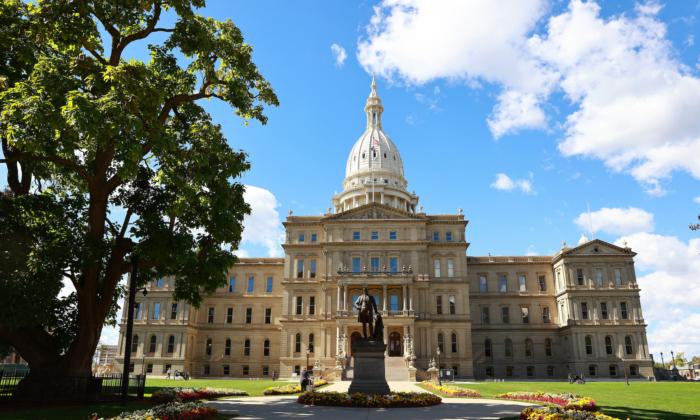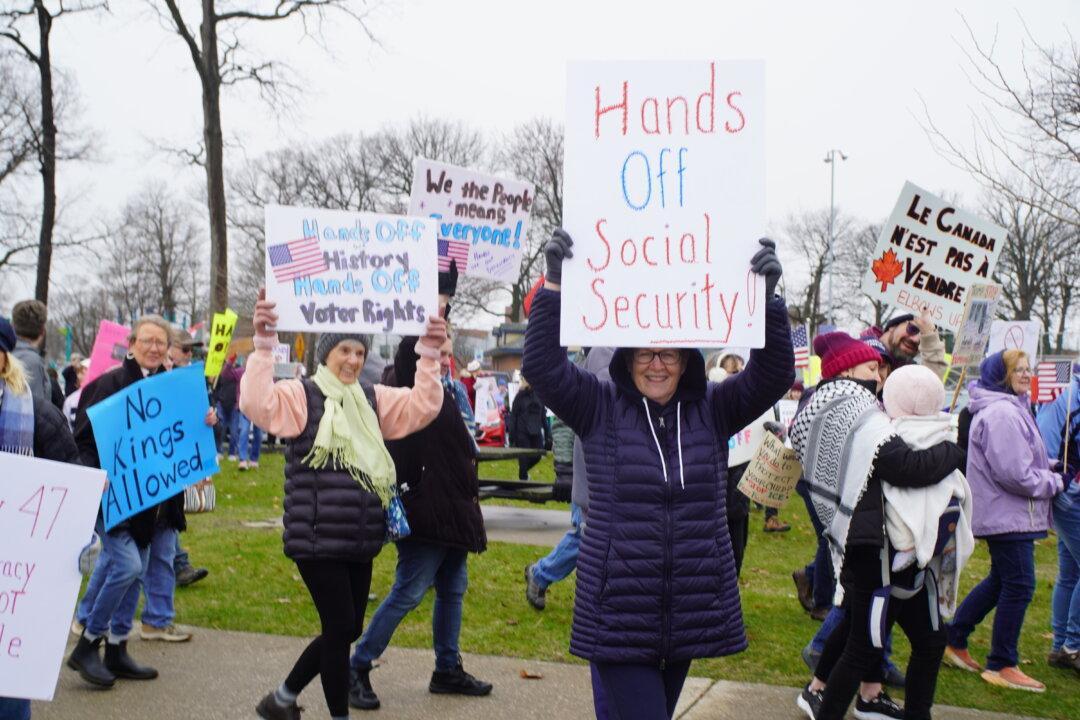Some call them the “working poor,” others refer to them as the “forgotten Americans.”
An ongoing series of studies sponsored by the charitable nonprofit United Way labels this group with the acronym ALICE, which stands for Asset Limited, Income Constrained, Employed.
These three designations represent the many Americans who, despite their best efforts, are struggling and often fail to meet their monthly expenses.
LeeAnn, a food bank volunteer in Port Huron, Michigan, told The Epoch Times a working couple that comes in regularly for food is living in their car because they cannot afford an apartment and the expenses that go with it.
Other employed food recipients have lost the income of their working partner and cannot make it on one income.
“People like that are so grateful we are here for them. I’ve seen many a tear flow,” she said.
Pat, LeeAnn’s coworker, said the average value of a food pick-up is about $150 per family.
“Groceries are so expensive. That amount does not even cover their whole weekly grocery bill. We supplement their food budget so they can pay the rent or car expenses,” Pat said.
“It’s inflation and the economy that is driving people to us.”
Josephine, a retiree and regular visitor to the food bank, told The Epoch Times that “higher and higher prices” are just too much for her. She described the food bank’s assistance as “extremely important” to her survival.
Meat, eggs, and baking supplies are the most sought-after items.
According to Pat, two months ago, the long-established Port Huron food bank served a record 38 families in a single day.
“We average about 20 to 25 families a day,” she said.

The Necessities of Life
As a benchmark in its studies, United For ALICE (UFA), an organization sponsored by United Way, uses a household survival budget (HSB) that includes food, housing, health care, transportation, childcare, technology, and taxes.The HSB is an estimate of the monthly expenses a household must cover to be considered financially solvent at a subsistence level.
The ALICE rate or “threshold” is determined by adding the percentage of a state’s households living in poverty to the percentage of people above the poverty line who report being unable to pay their monthly bills.
According to UFA, people like them are mired in a socio-economic stratum that earns more than the Federal Poverty Level (FPL) but not enough to afford the basic necessities of life. That makes them Asset Limited, Income Constrained, Employed—ALICE.
Hard Choices
Together with the households living below the poverty line, ALICE families must often make a tough choice: Pay the rent or put food on the table.UFA researchers conduct studies state-by-state, and also accumulate nationwide data.
The national average at the time was 42 percent.
The UFA data shows 162,912 more Michigan households could not make ends meet in 2022 than in 2019.
UFA’s Director of Research and Strategic Analysis, Ashley Anglin, told The Epoch Times that in 2018-19, the number of ALICE households was “ticking down in a lot of states.”
According to Anglin, during the pandemic year of 2020, the situation worsened, but the increase in ALICE households was mitigated somewhat by the federal COVID-19 relief payments.
Persistent Problem
“The high rate of ALICE households is a persistent national problem that remains remarkably steady year over year,” Anglin said.She said, “The focus has been on alleviating the immediate need rather than on necessary structural reform.”
Regarding 2023 and 2024, Anglin stated that the best data comes from biennial studies that have yet to be published.
“I can say, however, that I am hearing that a lot of people are feeling stuck; as if running in a maze and not getting anywhere. These are people who work and go to school. Yet, they can’t get ahead—even with multiple jobs,” she said.
In 2022, the annual cost of the necessities listed in the survival budget described above for a single adult in Michigan was $27,372 per year.
According to UFA, a single adult must earn $13.69 per hour to afford those expenses. However, in Michigan, in 2022, the median hourly wage was $13 for fast food and counter workers, $13.74 for personal care aides, $14.38 for retail salespersons, and roughly $14.65 for wait staff and cooks.
These people are classic illustrations of ALICE—individuals living on the margin or from paycheck to paycheck—who often make up the deficit with their credit cards. There is no extra money for unanticipated expenses or retirement savings.
The UFA report said, “These workers often struggle to keep their own households from financial ruin while keeping our local communities running.”
Pennsylvania
According to UFA, there were 1,902,886 Pennsylvania households unable to meet the expenses of the Household Survival Budget in 2019.By 2022, the number rose to 2,151,647, an increase of 13 percent or 248,761 households.
Pennsylvania had 5,279,632 households in 2022, of which 40 to 41 percent were below the ALICE threshold.
Kristen Rotz, president and CEO of United Way of Pennsylvania, said very little changed in 2023 and 2024.
“Inflation is slowing, but wages, though increasing somewhat, are still lagging. The cost of the basics outpaced wage growth,” she told The Epoch Times.
Rotz stated that more realistic rules for income tax credit eligibility and an improvement in the availability and affordability of childcare were actions that could relieve the financial woes of many Pennsylvanians.
Wisconsin
In 2022, 35 percent of Wisconsin’s 2,466,060 households were below the ALICE threshold. That figure includes the 11 percent of families below the poverty level plus the 24 percent of total households living above the poverty level but below the ALICE threshold.In 2019, 771,881 households could not cover their basic monthly living expenses. The number grew to 869,101 in 2022, an increase of 13 percent.
Georgia
Thirteen percent of Georgia’s 4,021,382 households earned less than the Federal Poverty Level in 2022. At that time, 35 percent of Georgia households qualified as ALICE, which, taken together, means that 48 percent of Georgia families lived below the ALICE threshold.The number of Georgia households that could not pay their monthly bills was 1,852,262 in 2019. The figure increased to 1,920,675 in 2022.
United For ALICE data comes from the U.S. Census Bureau and other agencies of the federal government. It is updated as new information becomes available.
“It shouldn’t be terribly surprising,” said Matt Schultz, LendingTree’s chief credit analyst, in a statement. “The perfect storm of record debt, sky-high interest rates, and stubborn inflation have resulted in many Americans’ financial margin of error shrinking to virtually zero.”
Anglin said UFA’s studies aim to help decision-makers “broaden their understanding of financial hardship and advocate for changes to the present system.”







